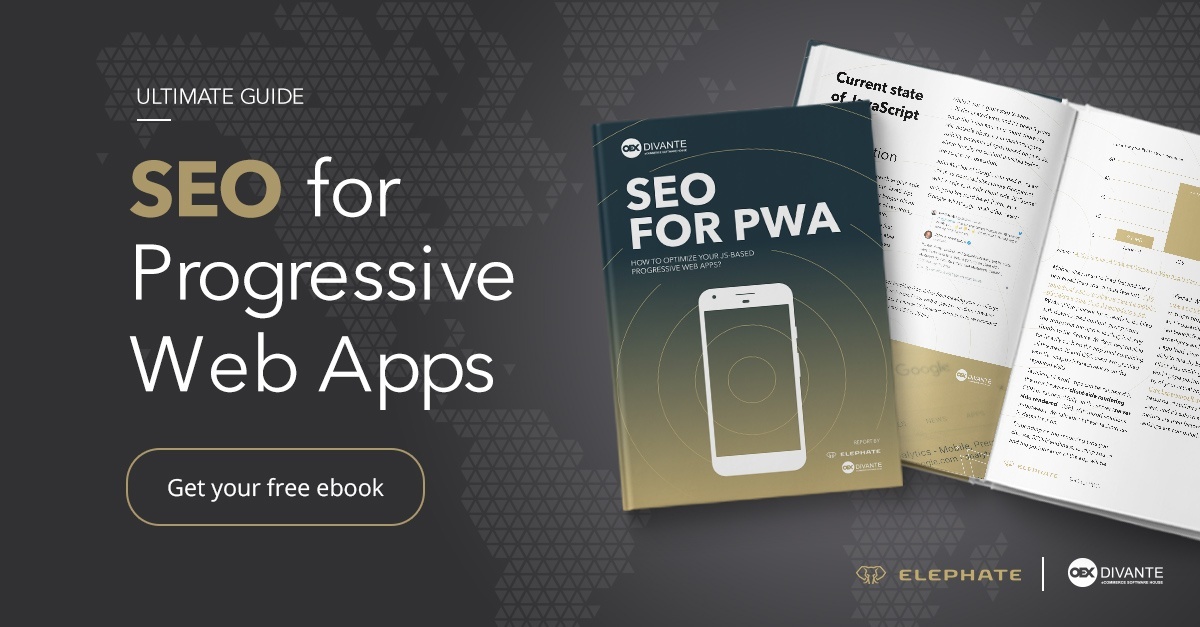Have you ever heard that companies which use Predictive Analytics achieve 73% higher sales than those who have never done it? And what do you say about the fact that 65% of customers feel completely frustrated and annoyed when you’re sending them incoherent offers and experiences through different channels?

IBM and Accenture, which conducted this research don’t miscalculate. If you deal with eCommerce and want to boost revenue, grow faster and win competitors’ rat race you are definitely gasping for Big Data solution. Many clients believe that Big Data is complicated and don’t know how they can use this implementation in their eBusiness. In reality, the algorithm’s based on 4V’s: variety, velocity, volume and value are as easy as a pie.
You might be interested in: B2B ecommerce solutions

The key question is about vision, vivid imagination which data you can correlate and analyse? But if your stumper will be visionary, don’t be surprised by revolutionary and extraordinary conclusions. Below we present 20 Big Data most interesting cases in eCommerce and Retail Industry, which might inspire you how to get the most out of data.
Big data at Alibaba
Credit Scoring in eCommerce? Alibaba proved that this feature has an application not only in Finance and Assurance industries. What is more, there is no contact between moneylender and borrower, with all interactions and payment handled online. As you can guess, the system is constructed in a way to reduce costs and risks.
Big data at eBay
You know what’s the reason for support data at an extreme scale and delivering personalized and engaging customer experience in the world’s largest online marketplace? Let the numbers speak. The system handles extreme data velocity with 6 billion writes and 5 billion reads daily. The amount of data stored: 250 TBs.
Big data at Groupon
The company relies on information from both customers and vendors to make daily deal transactions seamless. “The fastest growing company ever” by Forbes Magazine, realized they needed better ways to organize and make sense of the long-term generated data. That’s why they chose Cloudera’s distribution based on Hadoop framework. What is it? Strictly speaking, one of the best Big Data solution, prepared just to extract, process and analyze huge amounts of data.
Big data at Amazon
On the Internet you can find huge amount of Amazon’s use cases. That’s because it’s probably the model example of eCommerce Big Data implementations. It’s a new way in such areas as personalizing every interaction, competing on value rather than price, predicting trends and improving customer experience. All of this has been applied by Amazon for years. The company’s results indicate that the chosen direction was appropriate.

Big data at Etsy
Etsy, the world’s most vibrant handmade marketplace is one of the plethora of companies, where the role of Big Data is used, among others, to site improvements. Expression of these changes is something as simple as tweaking a “favorite” button, which lets visitors bookmark the products they like. In case of 800.000 sellers and 40+ million monthly visitors, eCommerce platform, even such a small change has moved the needle.
Big data at Nordstrom
Sometimes companies take a step further in Big Data area, which might seem controversial. Nordstrom decided to implement an experiment in their Dallas-Fort Worth area stores which used WIFI signals to monitor all customers movements and behavior. It provided the American upscale fashion retailer with helpful insights into customer shopping trends, allowing to improve customer service and personalized ads.
Big data at Easysize
Have you ever bought clothes in online shops? How many times you had to return a jersey or trousers because it was too slim, wide or long? Due to Easysize, which is the solution for that kind of problems, fashion retailers and marketplaces can decrease returns by 35-40%. What is more, it saves the time of both retailer and seller. And, as they say, time is money.
Big data at Netflix
Executives at Netflix wanted to create and sell first TV series in the history based on data which would be a hit before anyone shouted „action”. The company observed 20 millions of previous customers and meticulously recorded all data created by them. How many users paused a movie at that point? Which dialogues were irrelevant and dry as a dust? That processed information let the company to create a complete product as the House of Cards is.
Big data at CVS
The US second-largest drugstore chain due to data analyze discovered that one-third of consumers stopped taking prescribed medicine after one month, and 50% stopped after a year. What did they do? The Company started automated program of texts, phone calls and emails to remind people to refill their prescriptions. They also added a special alert to customer profiles which let pharmacists chat about the ones who weren’t taking the medicine as prescribed.
Big data at Target
It’s probably the most popular and famous Big Data use case. It’s hard not to remember it, because of question springs from. “What they know about us, and what they want to do with that information?” Prediction of pregnancy before women perceived it should make it clear that as consumers we are still under surveillance. It’s also present Big Data’s impressiveness and power.
Big data at Brooks Brothers
Cindy Lincks, Brooks Brothers’ analytics director indicated main problems of the company: they couldn’t get the answers fast enough, the team was mired in spreadsheets, most viewers not transformed into buyers –the most important and well-known barriers to every eBussines. This case presents in which areas you should invest when similar obstacles occur in your company.
Big data at Agoda.com
Agoda.com is a booking site that offers its services in 38 languages and covers a whole range of accommodation. One of the factors that have made Agoda popular is its lowest price guarantee – meaning that if you book a room through the site and get a cheaper offer from another website, Agoda will either match that rate or beat it. Because nobody wants to return money, company should be prepared for this kind of situation – and that’s the point where Big Data is a life saver.
Big data at Macy’s
This mid-range chain of department stores uses Big Data to create customer-centric product range. The company analyses out-of-stock rates, sell-through rates, price promotions etc. and correlates these with SKU data from a product at time and location. Of course, the aim is simple: optimize local product range to the individual customer segments in those locations.
Big data at BikeBerry
Which results would be the pearly gate for your company? Sales boosted by 133 percent? Increased user activity by 200 percent? Doubled the number of return customers? Return customers spending over 30 percent more? Frankly speaking, the presented results are more than satisfactory. BikeBerry, an online bicycle and bicycle accessory retailer reached them and proved that “Big Data” is not only a buzzword.
Big data at Autohaus.de
German online retail brokerage for selling new cars to end customers, decided to use Pentaho – similar to Cloudera, Big Data platform. What did they reach? The Platform allows them to create visual and interactive user interfaces to analyze sales and company KPIs. Another advantage is the possibility to create daily reports used by sales, business development, controlling and purchase teams. And there’s more….
Big data at Dollar General
US company headquartered in Tennessee is a chain of almost 9,500 stores. The main point as you can guess is to make it possible for suppliers to examine real-time operational and retail data. Now, after Big Data software suppliers could learn what products from other suppliers ended up in the same shopping basket with their products. This would allow one supplier to work up cross-promotional agreements with other suppliers to increase the sales volume for both parties.
Big data at Muji
Japanese retail enterprise, as many others, use big data to personalize shopping experience. Over two terabytes of transaction and clickstream data across 2-millions registered customer interaction provide them with recommendations on what to buy. Understanding customer preferences also help the retailer cross-sell and up-sell products, and build new revenue streams.

Big data at Wal-Mart
In April 2011 the biggest multinational retailer company in the US made clear that Big Data will become a part of Wal-Mart DNA. They purchased Kosmix, a social media start-up focused on e-commerce. They developed a software application which had the ability to search and analyze social media applications (like Twitter or Facebook) in real-time in order to provide personalized insights to users. Now Wal-Mart is Big Data knowledge empire.
Big data at Paytronix
Paytronix helps restaurants build brand loyalty. Data Insights provides restaurants and retailers with the tools and services to synthesize data from all these sources. To accomplish this, Paytronix leverages Cloudera’s Hadoop distribution to integrate data from more than 8000 restaurants.
Big data at Neiman Marcus
Retailers stand to improve by making their content more discoverable. Cloudera a Big Data platform helps them reach this goal because it is completely different from other approaches that are out there. That’s the reason why Neiman Marcus, a company focused on serving the unique needs of the luxury market, decided to choose this popular software.
Do you know how to use Big Data implementations in your business? Contact us. Together we will find a satisfactory solution.
Published April 14, 2015











